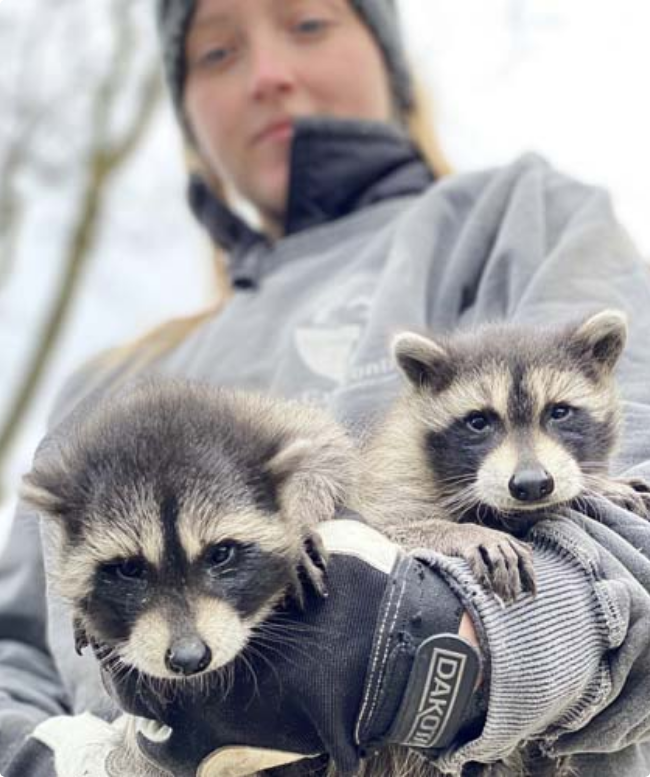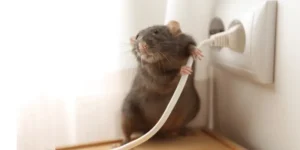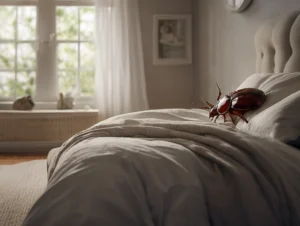Understanding the Problem: Raccoons and Squirrels in the GTA
In the Greater Toronto Area (GTA), raccoons and squirrels are prevalent urban wildlife that significantly impact residential spaces, particularly during the winter months. As the temperature drops, these animals instinctively seek shelter and food in warmer environments, often making homes their refuge. Raccoons, notorious for their dexterous paws and keen problem-solving abilities, are known to invade attics, garages, and basements, where they can create nests. Squirrels, on the other hand, frequently enter homes through small openings, utilizing their agility to access attics or eaves where they seek warmth and security.
During winter, both species face increased difficulty finding food, prompting them to forage in neighborhoods. Squirrels primarily consume nuts, seeds, and fruits during the warmer months; however, when these resources become scarce, they may turn to bird feeders, gardens, and even pet food left outdoors. Raccoons are omnivorous scavengers that will explore garbage bins, compost piles, or pet dishes, searching for a sufficient food source. This behavior is not merely a nuisance; it poses several risks to homeowners, including potential property damage.
The nesting habits of raccoons and squirrels can lead to significant structural concerns. Raccoons often tear through insulation, chew on wiring, and create unsightly and hazardous messes within attics. Meanwhile, squirrels can cause substantial damage by nesting in roofs and gutters, which can lead to leaks and other issues. Their persistent gnawing can also wear down attics and walls, putting homeowners at risk for costly repairs. Understanding these behaviors and the risks associated with them is crucial for any resident looking to safeguard their home against these intruders during the winter months.
Preventive Measures: Securing Your Home
Protecting your home from raccoons and squirrels, especially during the winter months in the Greater Toronto Area (GTA), requires a combination of vigilance and proactive measures. One of the most essential steps in safeguarding your property is to thoroughly inspect and seal any entry points that these animals could exploit. This includes attics, roofs, and basements which are common areas of vulnerability. Homeowners should utilize durable materials such as steel mesh, heavy-duty plywood, or reinforced steel flashing to block access. These materials are resistant to gnawing, which is a critical consideration given the strong teeth of raccoons and squirrels.
Furthermore, proper garbage storage plays a crucial role in deterring these pests. It is advisable to use animal-proof containers with tight-fitting lids to prevent raccoons and squirrels from scavenging. Ensuring that all garbage bags are secured inside these bins will minimize smells that can attract wildlife. Additionally, outdoor pet food should not be left unattended. Any uneaten pet food should be stored indoors or in sealed containers to avoid enticing these critters to your property.
Landscaping also contributes significantly to home security against raccoons and squirrels. Homeowners should consider maintaining clear zones around their property by trimming trees and shrubs that are within close proximity to the home. Branches that overhang roofs can provide easy access, serving as a bridge for these animals. Keeping a well-manicured yard and removing potential nesting materials, such as piles of leaves or debris, can further reduce attractiveness.
In conclusion, by implementing these preventive measures, homeowners in the GTA can effectively secure their residences against raccoons and squirrels, reducing the risk of unwanted invasions during the winter months.
Effective Deterrents: Safe Methods to Keep Wildlife Away
Protecting your home from raccoons and squirrels during the winter months in the Greater Toronto Area (GTA) requires an understanding of effective deterrents. Utilizing a combination of physical and sensory methods can significantly reduce unwanted wildlife activity around your property.
One of the most straightforward physical deterrents is the installation of fences. A sturdy, tall fence can serve as a barrier that discourages raccoons and squirrels from entering your yard. Ensure that the fence extends underground to prevent these animals from burrowing underneath. Additionally, motion-activated lights can be effective in startling nocturnal critters, making them feel unwelcome. The sudden illumination of a yard can deter raccoons from raiding garbage cans or invading gardens.
Alongside physical barriers, sensory deterrents can play a pivotal role in keeping wildlife at bay. Noise-making devices, such as ultrasonic repellents, produce sounds that are uncomfortable for animals but inaudible to humans. These devices can help to create an unfriendly environment for raccoons and squirrels without causing them harm. Furthermore, natural repellents, including strong scents like vinegar or essential oils, can be used to disrupt the animals’ comfort zones. Applying these substances around entry points can make your home less appealing to wildlife.
It is essential to consider the ethical implications of wildlife deterrents. Using traps should be approached with caution, as many methods can cause distress or harm to the animals. Instead, homeowners in the GTA are encouraged to explore humane options that comply with local wildlife regulations. Creating a wildlife-friendly environment while implementing these deterrents ensures that you manage raccoon and squirrel populations responsibly. By combining various strategies, residents can effectively safeguard their homes without compromising the well-being of local wildlife.
When to Seek Professional Help: Signs and Solutions
Homeowners often encounter signs of raccoon and squirrel infestations, which necessitate the consideration of professional wildlife control services. Early detection is crucial in mitigating potential damage and disturbances caused by these animals. Common indicators include unusual noises in attics or walls, particularly during nighttime, which may signal the presence of nesting wildlife. Additionally, raccoon and squirrel droppings can be found around potential entry points, such as vents or eaves, which not only suggest an infestation but also pose health risks due to their potential for disease transmission.
Furthermore, visible damage to your property, including torn insulation, gnawed wires, or displaced shingles, can indicate that raccoons or squirrels have taken up residence. These signs should prompt immediate action, as continued occupation can lead to increased repair costs and safety hazards. If you observe any of these symptoms, it may be time to consult a wildlife removal expert.
Professional wildlife removal services offer a range of solutions tailored to address infestations effectively. These services often begin with a comprehensive property inspection to assess the extent of the issue. After identifying entry points and nesting sites, experts can implement humane removal strategies to relocate the animals safely. Additionally, exclusion services are critical, as they fortify your home against future invasions by sealing off potential entry areas and providing ongoing monitoring if required.
When selecting a reputable wildlife control company in the Greater Toronto Area (GTA), take time to research and consider their experience, customer reviews, and the methods they employ. It is essential to choose a service provider that emphasizes humane practices while also providing a clear plan for preventing re-entry of raccoons and squirrels into your home. By acting promptly and seeking help from professionals, you can safeguard your living space from unwanted wildlife and ensure a peaceful winter season.




